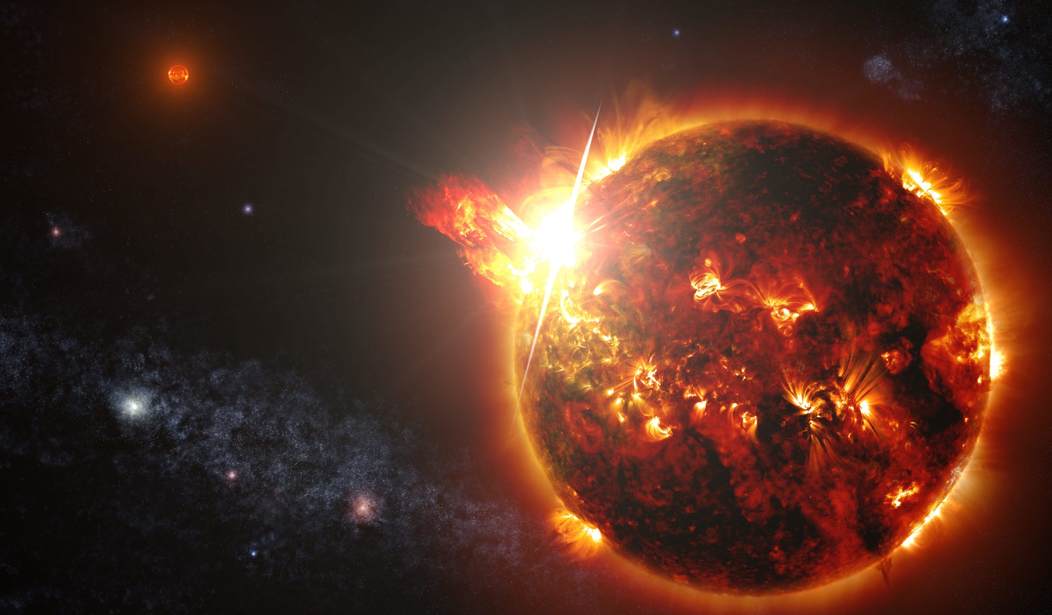WASHINGTON – Sooner or later the Sun is going to send a plasma storm into the Earth’s atmosphere again, potentially devastating satellites and electrical systems and causing up to $2 trillion in damage, a scientist told House lawmakers on Thursday.
For years, scientists and experts have been discussing the possibility of a corona mass ejection, an event caused by a massive sun eruption, producing a cloud of solar plasma capable of severely disorienting the Earth’s magnetic field. The last such storm to collide with Earth’s atmosphere was the 1859 Carrington Event, but in 2012, Pete Riley, senior scientist at Predictive Science in San Diego, estimated that there is about a 12 percent chance of another storm striking Earth by 2022, as detailed in his report published in Space Weather.
Since then, a number of solar flares have just missed Earth, including a storm about five months after Riley published his report. The National Oceanic and Atmospheric Administration’s Space Weather Prediction Center recorded two more solar flares on Sept. 6, with the second one registering as the most powerful in more than a decade, resulting in radio blackouts in Earth’s atmosphere, according to Space.com.
It’s only a matter of time before there is a direct collision with Earth, according Heidi Hammel, executive vice president for the Association of Universities for Research in Astronomy, who testified at the House Committee on Science, Space, and Technology’s Subcommittee on Research and Technology hearing.
“When you do the math and you think about when the Carrington Event took place, where we are now, how many decades is that, 10 percent probability, we’re pretty close to maybe having another one, and there have been in recent months some very large-scale solar flares that have taken place. Fortunately, they have not been directed at the Earth, so we have escaped for now,” she said. “It’s real. It’s going to happen sooner or later, so it’s important that we are prepared for that.”
According to experts, North America’s Total Solar Eclipse, which occurred on Aug. 21, served as an opportunity for scientists and organizations to explore the possibility of another Carrington Event, offering a chance to test exercise models. NASA, NOAA, FEMA and the U.S. Air Force are all exploring the possibility of a solar storm colliding with Earth.
The National Science and Technology Council for the past three years has directed a task force devoted to space weather and mitigation research. In late 2015, the group produced a national space weather action plan, which involved NASA, the National Science Foundation, FEMA and the Department of Energy.
James Ulvestad, the acting assistant director for the directorate for Mathematical & Physical Sciences at the National Science Foundation, serves on the task force.
“It’s good to see a lot of different agencies working together,” he said during Thursday’s hearing. “In the course of my normal daily life, I wouldn’t interact with FEMA, so I think it’s really good that we have the opportunity through this task force.”
The subcommittee held the hearing to discuss the takeaways from August’s total solar eclipse. Rep. Don Beyer (D-Va.) said he noticed NASA officials not wearing the highly publicized protective sunglasses at certain points during the eclipse.
“Once totality has been achieved, you can take off the glasses,” Hammel said, after taking a pair off before the panel. “And then you have a fantastic view. You need these glasses when any little piece of the sun is exposed.”
Michelle Nichols-Yehling, director of public observing at the Adler Planetarium, said there were also multiple alternatives to wearing the protective glasses, including the use of welder’s glass. Other alternatives involved non-direct viewing by projecting the eclipse through holes in paper, colanders and even crackers, according to the planetarium.









Join the conversation as a VIP Member